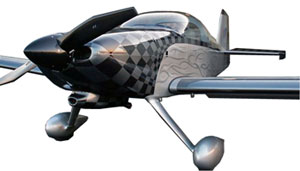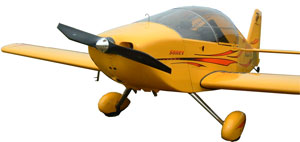 The P-TIP design
The P-TIP design The droop P-TIP is to control the air spillage over the propeller tip.
It delays the tip vorticies which cause drag and turbulence within the propeller arc.
A propeller, like a wing, works best when it has unturbulated air over the airfoil sections.
The P-TIP delays the vorticies, the propeller then has smooth air to provide best thrust and a
pronounced reduction in propeller noise.

An additional benefit of the P-TIP design is the volume of air the propeller
produces. When air flows through a standard propeller, the airflow will "roll" over the propeller
tip. As soon as it passes the tip it will tuck down behind the propeller blade giving a cone
of air from the propeller smaller than the propeller diameter.
For example, a 72" diameter propeller without a P-TIP will give a volume of air from the
propeller of approximately 68" in diameter; a P-TIP propeller will provide 72" of air volume.
This means that a 68" P-TIP will give the same volume of air as a standard tip 72" propeller.

By reducing propeller diameter there is less frontal area or flat plate drag on the aircraft.
Higher top speeds are the result without sacrificing takeoff or climb.
Pitch change and the Scimitar shape
The propeller has a fixed pitch that relies on the forward pull of the
propeller to automatically provide pitch change proportional to the amount of force being
applied to the propeller disk. When a propeller operates at a slower airspeed than its
maximum capability, it has a proportional pull in relation to the velocity of forward motion,
so at takeoff and climb, the propeller will have its largest forward pull.
Due to the scimitar shape, the tip of the propeller cones forward, as the coning angle
changes the propeller will lessen pitch that provides shorter takeoffs and higher rates
of climb. As the propeller increases in forward speed the disk pressure is reduced, this
forces the propeller to increase pitch and top speed. This change in pitch is approximately
four inches from takeoff to cruise.